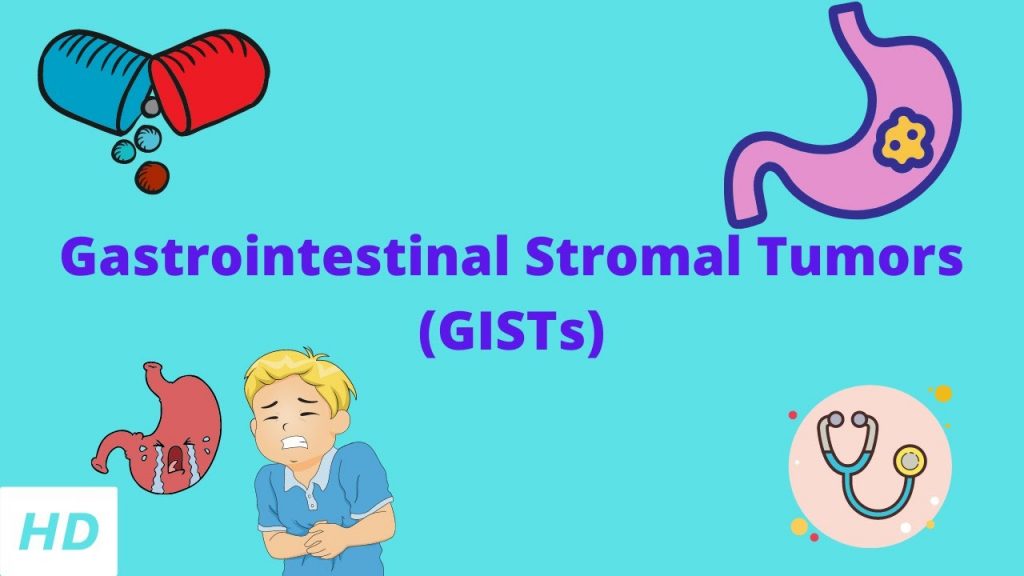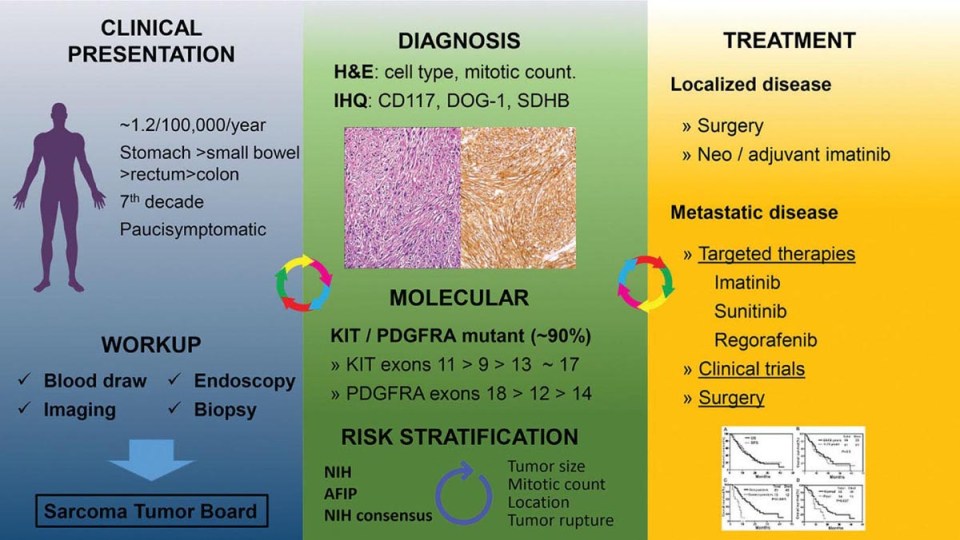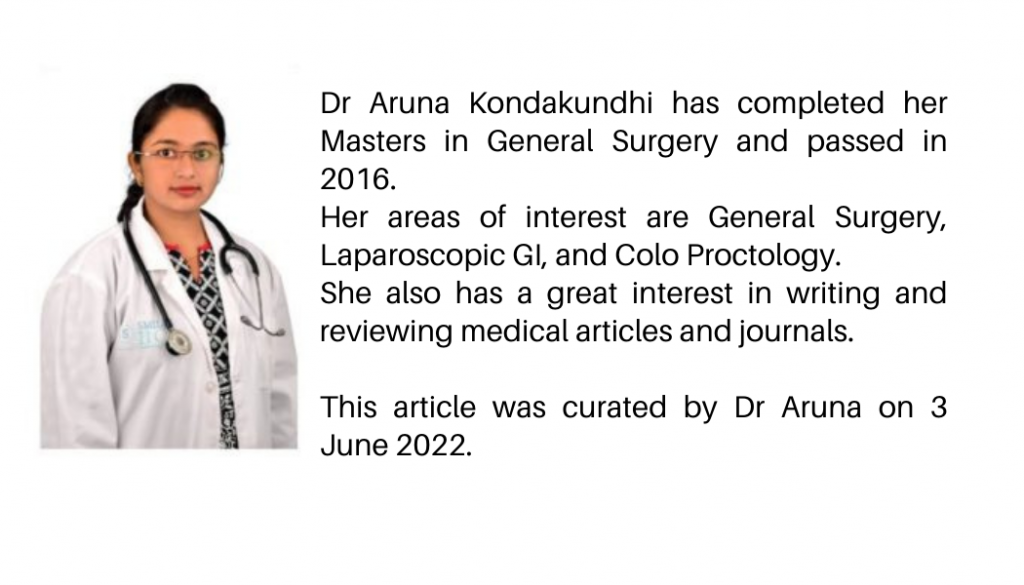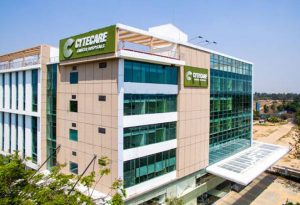Gastrointestinal Stromal Tumor (GIST)
Gastrointestinal stromal tumor or GIST is actually a cluster of overgrown cells or tumors which occur mainly in the gastrointestinal tract. These tumors usually grow mainly from the specialized cells that are found in the gastrointestinal tract. It is also called as interstitial cells of Cajal (ICCs) or also known as precursors to these cells. […] Read More
Top Doctors For Gastrointestinal Stromal Tumor (GIST) Treatments
Top Hospitals For Gastrointestinal Stromal Tumor (GIST) Treatments
Gastrointestinal Stromal Tumor (GIST)
Table of contents

What are gastrointestinal stromal tumors (GIST)?
Gastrointestinal stromal tumor or GIST is a cluster of overgrown cells or tumors that occur mainly in the gastrointestinal tract. These tumors usually grow mainly from the specialized cells found in the gastrointestinal tract. It is also called interstitial cells of Cajal (ICCs) or precursors to these cells. Adults between the age of 40 and 70 get GISTs. It rarely occurs in children as well as young adults. These tumors in the gastrointestinal tract can usually be cancerous (i.e., malignant), or at times it is noncancerous (i.e., benign). Gastrointestinal stromal tumors usually start in specialized nerve cells located mainly in the digestive system walls. These nerve cells in the digestive system are part of the autonomic nervous system. A small change in one of these cells’ DNA that controls the digestive processes, especially the movement of food mainly through the intestines, can give rise to GIST.

How are gastrointestinal stromal tumors diagnosed?
- In order to diagnose the gastrointestinal tumors, the following steps must be followed: To diagnose the GIST tumors, the doctor will review the patient’s medical history and family history.
- The doctor will conduct a physical exam, such as examining the patient thoroughly and possibly order tests to diagnose the tumor.
- There are several tests the doctor will suggest to diagnose the GIST tumors. They are CT scans, and Endoscopic Ultrasound (EUS) scans, which will be taken to determine the esophagus and inner lining of the stomach and help find the precise location of the tumor, respectively.

- Upper GI endoscopy helps examine the esophagus inner lining and the small intestine’s first part.

- The doctor does a fine-needle aspiration biopsy by taking a small tissue sample from the tumor.
- Lab tests are carried out on biopsies which can provide information mainly on the proteins that tumor cells make. The situation can be more aggressive when the tumor’s mitotic rate is high. In this case, the likelihood of other organs getting spread and affected is high.
- Positron Emission Tomography (PET) scan- A PET scan is performed to ensure that the tumor is truly localized and can be removed.
- Immunohistochemistry and electron microscopy study.
How are gastrointestinal tumors treated?
There are several options available for the treatment of GISTs. Based on the size of the tumor, its location, staging of the tumor, and the result of lab values, the doctor will suggest the treatment options to the patient. A few of the treatment options are listed below:
- Symptomatic GISTs are removed through surgery unless and until it is not too large or, in certain cases, it does not involve other organs.
- These tumors can also be resected by minimally invasive surgery where the doctor inserts a tube along with a camera or laparoscopy by making an incision in the abdomen.
- Targeted drug therapy- during this treatment, they focus on specific chemicals present within the cancer cells. By blocking these chemicals, the targeted drug treatment can cause cancer cells to die. The most commonly used drug is Imatinib or Gleevec. This treatment option can be used before or after the surgery or as a first-line treatment in conditions where cancer has spread to other parts of the body.
- Tyrosine kinase which is a type of enzyme that can help stop cancer cells grow for GISTs.
- The doctor might also recommend certain other drugs that can also target tyrosine kinase if GI stromal tumor does not actually respond to imatinib over time.
- The patient is advised to have a regular follow-up with the doctor to monitor the prognosis of the tumor. Medications will be provided to stop the GI stromal tumor from recurring.
What is the survival rate of GIST tumors?
The cervical rate of GI stromal tumors for people is 83% (5-year survival rate). However, it usually depends on many factors like the type of tumor, the type of treatment, and the recurrence of the tumor after the treatment.
Symptoms
The symptoms of GISTs or Gastrointestinal stromal tumors are as follows:
- Anemia that is caused by a tumor (slow-bleeding)
- Abdominal pain
- Mass felt in the abdomen.
- Nausea
- Vomiting
- Loss of appetite
- Weight loss
- Difficulty swallowing
Causes
A few of the causes of GISTs or Gastrointestinal Stromal Tumors are as follows:
- Genetic changes in a few genes are involved in GIST formation.
- Mutations in the KIT, as well as PDGFRA genes, are mainly associated with both familial as well as sporadic GISTs in individuals.
- Mutations in ICCs usually lead to cell growth, thus causing GIST formation.
FAQ
Stroma is the supportive framework of a gland, organ, or other structure. It is usually made of connective tissue. Stroma connects all other organs
The stroma is actually distinct from the parenchyma. The parenchyma of an organ usually consists of tissues that conduct a certain organ function, usually made of the bulk of the organ. Stroma, on the other hand, is everything else. It is the connective tissue, blood vessels, nerves, and ducts.
The gastrointestinal tract or GI is the tract that travels from the mouth to the anus. It mainly includes all digestive system organs in humans. The GI tract is usually 30ft. long
ENS or Enteric Nervous System, one of the different divisions of ANS or autonomic nervous system, is what is referred to.
Despite technological and medical treatment improvements, the overall mortality rate is 30%.

Picture Courtesy: oncohema
Most of these tumors are caused due to spontaneous changes in the cells, not due to hereditary. However, certain inherited tumor disorders can increase the risk of having GISTs.
The most common side effects are listed below:
I. Nausea
II. Diarrhea or constipation
III. Low blood count
IV. Muscle cramps
V. Extreme tiredness.

































































































